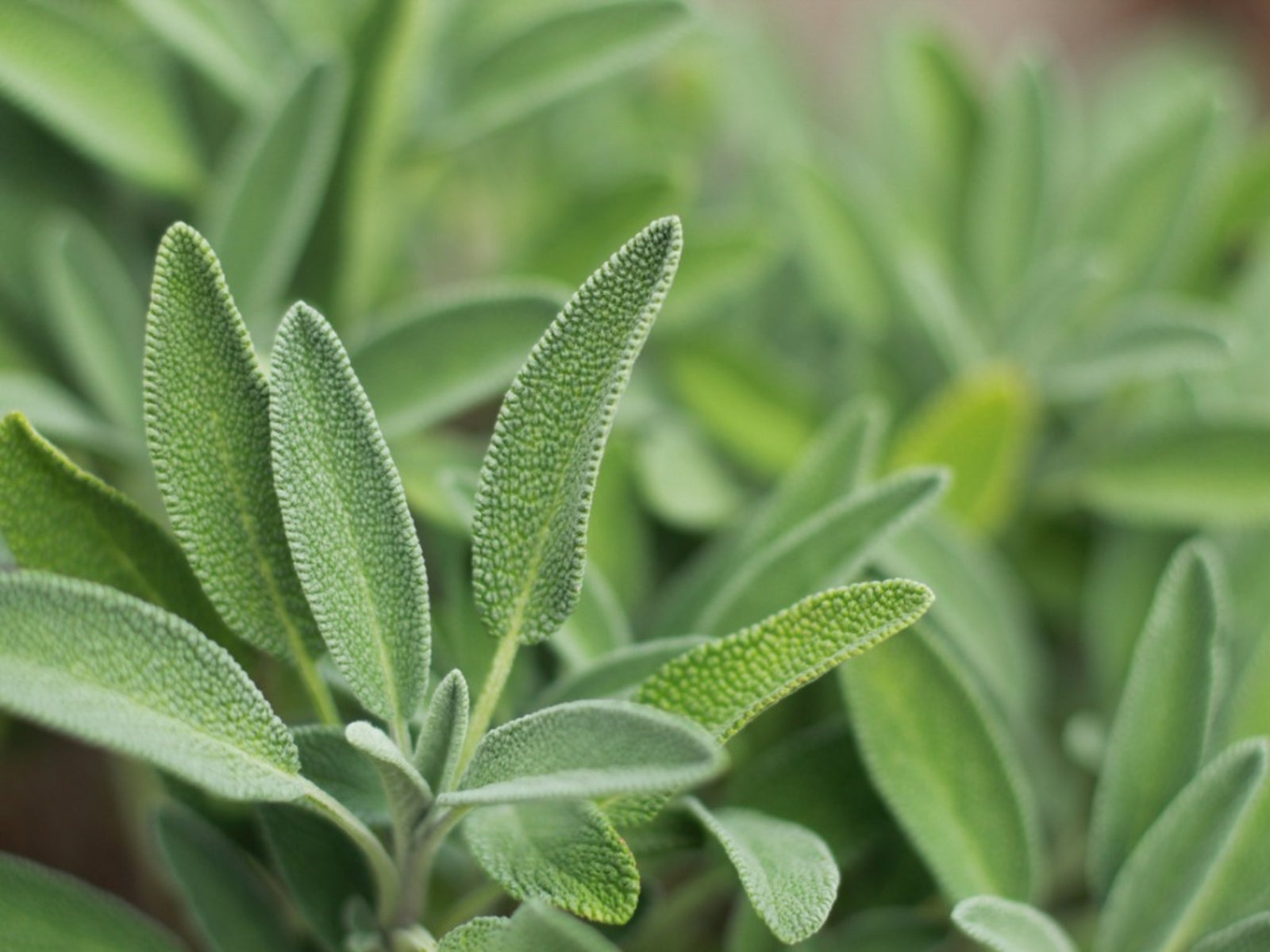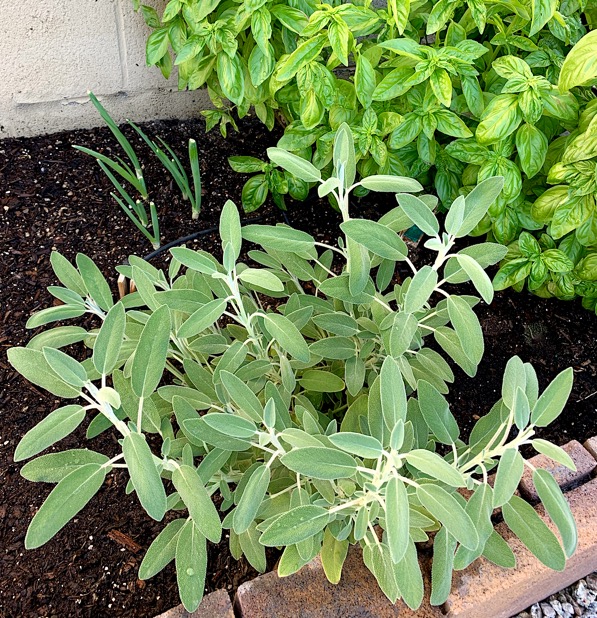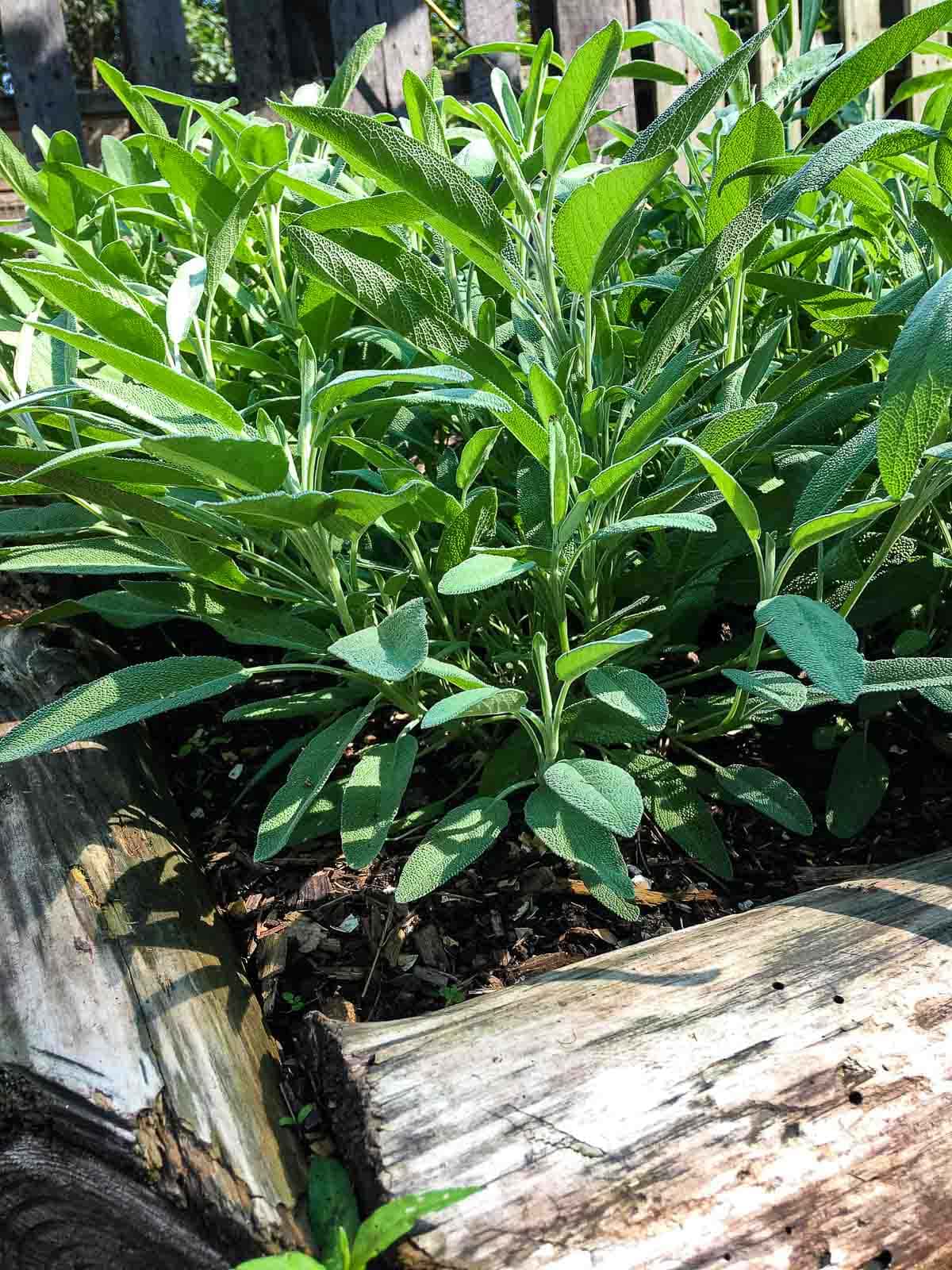Understanding Sage Plant Size: What to Expect
Sage plants are a popular choice for gardeners and cooks alike, prized for their fragrant leaves and versatility in cooking. But have you ever wondered how big does sage grow? The answer depends on several factors, including the specific variety, growing conditions, and care. On average, sage plants can grow to be around 1-3 feet (30-90 cm) tall and 1-2 feet (30-60 cm) wide, but some varieties can reach heights of up to 4 feet (1.2 meters) or more.
Understanding the growth habits of sage plants is essential for optimal care and cultivation. Sage plants are perennial, meaning they come back year after year, and they can be sensitive to extreme temperatures, moisture levels, and soil quality. By providing the right conditions and care, you can encourage your sage plant to grow to its full potential and enjoy a bountiful harvest of fragrant leaves.
So, how big does sage grow? The size of your sage plant will depend on the specific variety, as well as the growing conditions. Some popular varieties, such as ‘Tri-Color’ and ‘Purpurea’, are known for their compact growth habit and can thrive in smaller spaces. Other varieties, such as ‘Common Sage’ and ‘Berggarten’, can grow much larger and may require more space to spread out.
By understanding the growth habits of sage plants and providing the right care and conditions, you can enjoy a healthy and productive harvest of fragrant leaves. Whether you’re a seasoned gardener or just starting out, sage is a great choice for anyone looking to add a little flavor and fragrance to their cooking.
Factors Affecting Sage Plant Size: Climate, Soil, and Pruning
When it comes to understanding how big does sage grow, it’s essential to consider the key factors that impact sage plant size. Climate, soil quality, and pruning practices are three critical elements that can significantly influence the growth and size of your sage plant.
Climate plays a crucial role in determining the size of your sage plant. Sage plants prefer well-draining soil and full sun to partial shade. In areas with hot summers, sage plants may require more frequent watering to prevent scorching, while in cooler climates, they may require protection from frost. Understanding your local climate and adjusting your care accordingly can help promote healthy growth and maximize plant size.
Soil quality is another vital factor that affects sage plant size. Sage plants prefer slightly acidic to neutral soil pH (around 6.0-7.0) and well-draining soil to prevent root rot. Adding organic matter such as compost or manure can help improve soil fertility and structure, leading to healthier and more robust plants.
Pruning practices also significantly impact sage plant size. Regular pruning can help control the shape and size of your sage plant, promoting bushy growth and preventing legginess. Pruning in the spring, after the threat of frost has passed, can help encourage new growth and maximize plant size. Additionally, pinching off flower buds can help direct the plant’s energy towards leaf growth, leading to a more robust and flavorful harvest.
By understanding and optimizing these factors, you can create an environment that promotes healthy growth and maximizes the size of your sage plant. Whether you’re growing sage for culinary purposes or as an ornamental, providing the right conditions and care can help you achieve the best results.
How to Grow Sage: Tips for Encouraging Bushy Growth
When it comes to growing sage, there are several tips and techniques that can help encourage bushy growth and maximize plant size. By following these guidelines, you can create an environment that promotes healthy growth and helps your sage plant thrive.
Planting location is a critical factor in determining the size and health of your sage plant. Sage plants prefer well-draining soil and full sun to partial shade. Choose a location that receives at least 4-6 hours of direct sunlight per day, and ensure the soil is slightly acidic to neutral (pH 6.0-7.0).
Watering is another essential aspect of sage plant care. Sage plants prefer moist soil, but overwatering can lead to root rot and other problems. Water your sage plant regularly, but make sure the soil has a chance to dry out slightly between waterings.
Fertilization can also play a role in promoting healthy growth and maximizing plant size. Feed your sage plant with a balanced fertilizer (10-10-10) during the growing season (spring-fall), and avoid overfertilizing, which can lead to weak and leggy growth.
Pest management is also crucial when growing sage. Keep an eye out for common pests like aphids, whiteflies, and spider mites, and use organic or chemical controls as needed to prevent infestations.
By following these tips and techniques, you can create an environment that promotes healthy growth and helps your sage plant thrive. Whether you’re growing sage for culinary purposes or as an ornamental, providing the right care and conditions can help you achieve the best results and answer the question of how big does sage grow.
Sage Varieties: Which Ones Grow the Largest?
When it comes to growing sage, there are several varieties to choose from, each with its own unique characteristics and growth habits. Some sage varieties are known for their larger size, making them ideal for gardeners who want to maximize their harvest. In this section, we’ll explore some of the most popular sage varieties that are known for their larger size.
‘Tri-Color’ sage is a popular variety that is known for its striking tri-colored leaves and robust growth habit. This variety can grow up to 3 feet (90 cm) tall and 2 feet (60 cm) wide, making it an excellent choice for gardeners who want a larger sage plant. ‘Tri-Color’ sage is also known for its excellent flavor and aroma, making it a popular choice for cooking and herbal remedies.
‘Purpurea’ sage is another variety that is known for its larger size and deep purple leaves. This variety can grow up to 2 feet (60 cm) tall and 1.5 feet (45 cm) wide, making it an excellent choice for gardeners who want a compact but robust sage plant. ‘Purpurea’ sage is also known for its excellent flavor and aroma, making it a popular choice for cooking and herbal remedies.
‘Berggarten’ sage is a German variety that is known for its large size and robust growth habit. This variety can grow up to 3 feet (90 cm) tall and 2 feet (60 cm) wide, making it an excellent choice for gardeners who want a larger sage plant. ‘Berggarten’ sage is also known for its excellent flavor and aroma, making it a popular choice for cooking and herbal remedies.
These are just a few examples of sage varieties that are known for their larger size. By choosing the right variety and providing the right care and conditions, you can maximize your sage plant’s growth and enjoy a bountiful harvest. Whether you’re growing sage for culinary purposes or as an ornamental, understanding the different varieties and their growth habits can help you achieve the best results and answer the question of how big does sage grow.
Pruning Sage for Size Control: Techniques and Timing
Pruning is an essential part of sage plant care, as it helps control the size and shape of the plant, promotes healthy growth, and encourages new leaves to grow. When it comes to pruning sage, timing is everything. Pruning at the right time can make a big difference in the plant’s overall health and size.
The best time to prune sage is in the spring, after the threat of frost has passed. This allows the plant to focus its energy on producing new growth, rather than trying to recover from pruning. Prune your sage plant back to about 6-8 inches (15-20 cm) from the ground, making sure to remove any dead or damaged leaves or stems.
When pruning sage, it’s also important to consider the shape of the plant. Sage plants can become leggy and sprawling if not pruned regularly, so make sure to prune them back to maintain a bushy shape. You can also prune individual stems to encourage branching and promote a fuller plant.
Another important aspect of pruning sage is pinching off flower buds. This helps direct the plant’s energy towards leaf growth, rather than seed production. Pinch off flower buds as soon as they appear, and your sage plant will reward you with a bountiful harvest of delicious leaves.
By pruning your sage plant regularly, you can control its size, promote healthy growth, and encourage new leaves to grow. Whether you’re growing sage for culinary purposes or as an ornamental, pruning is an essential part of sage plant care. By following these pruning techniques and timing, you can help your sage plant reach its full potential and answer the question of how big does sage grow.
Common Mistakes to Avoid When Growing Sage
When growing sage, there are several common mistakes to avoid in order to promote healthy growth and maximize plant size. By understanding these mistakes and taking steps to correct them, you can help your sage plant thrive and reach its full potential.
One of the most common mistakes to avoid when growing sage is over-watering. Sage plants prefer well-draining soil and can be susceptible to root rot if the soil is too moist. Make sure to water your sage plant regularly, but avoid over-watering, which can lead to weak and leggy growth.
Another mistake to avoid is under-pruning. Sage plants require regular pruning to maintain their shape and promote healthy growth. Failure to prune your sage plant can lead to a leggy and sprawling habit, which can reduce the plant’s overall size and productivity.
Inadequate sunlight is also a common mistake to avoid when growing sage. Sage plants prefer full sun to partial shade, and inadequate sunlight can lead to weak and spindly growth. Make sure to provide your sage plant with at least 4-6 hours of direct sunlight per day.
Finally, failure to fertilize is another mistake to avoid when growing sage. Sage plants require regular fertilization to promote healthy growth and maximize plant size. Use a balanced fertilizer (10-10-10) and follow the instructions on the label for optimal results.
By avoiding these common mistakes and taking steps to correct them, you can help your sage plant thrive and reach its full potential. Whether you’re growing sage for culinary purposes or as an ornamental, understanding these mistakes and taking steps to avoid them can help you achieve the best results and answer the question of how big does sage grow.
Sage Plant Care: Ongoing Maintenance for Optimal Growth
Ongoing maintenance is crucial for optimal sage plant growth. By providing regular care and attention, you can help your sage plant thrive and reach its full potential. In this section, we’ll cover the key aspects of sage plant care, including regular watering, fertilization, and pest monitoring.
Regular watering is essential for sage plant growth. Sage plants prefer well-draining soil and should be watered regularly, but avoid over-watering, which can lead to root rot and other problems. Water your sage plant when the top inch of soil feels dry to the touch, and avoid getting water on the leaves to prevent fungal diseases.
Fertilization is also important for sage plant growth. Use a balanced fertilizer (10-10-10) and follow the instructions on the label for optimal results. Fertilize your sage plant regularly, but avoid over-fertilizing, which can lead to weak and leggy growth.
Pest monitoring is also crucial for sage plant care. Keep an eye out for common pests like aphids, whiteflies, and spider mites, and use organic or chemical controls as needed to prevent infestations. Regularly inspect your sage plant for signs of pests or diseases, and take action promptly to prevent the problem from spreading.
By providing regular care and attention, you can help your sage plant thrive and reach its full potential. Whether you’re growing sage for culinary purposes or as an ornamental, ongoing maintenance is essential for optimal growth and maximizing plant size. By following these tips and guidelines, you can help your sage plant grow big and healthy, and answer the question of how big does sage grow.
Maximizing Sage Yield: How to Harvest for Optimal Flavor and Size
Harvesting sage at the right time is crucial for optimal flavor and size. Sage plants are typically ready to harvest when the leaves are at their peak flavor and aroma. In this section, we’ll cover the best time to harvest sage, how to prune for regrowth, and tips for preserving sage leaves.
The best time to harvest sage is in the morning, after the dew has dried but before the heat of the day. This is when the leaves are at their most flavorful and aromatic. Use scissors or pinch off individual leaves to harvest, and avoid pulling on the stems to prevent damaging the plant.
Pruning for regrowth is also important when harvesting sage. After harvesting, prune the plant back to about 6-8 inches (15-20 cm) from the ground to encourage new growth and prevent the plant from flowering. This will help promote bushy growth and maximize plant size.
Preserving sage leaves is also a great way to enjoy the flavor and aroma of sage year-round. There are several ways to preserve sage leaves, including drying, freezing, and infusing in oil or vinegar. Drying is a simple and effective way to preserve sage leaves, and can be done by tying the leaves in small bunches and hanging them upside down in a warm, dry place.
By following these tips and guidelines, you can maximize your sage yield and enjoy the flavor and aroma of sage year-round. Whether you’re growing sage for culinary purposes or as an ornamental, understanding how to harvest and preserve sage leaves is essential for optimal growth and maximizing plant size. By answering the question of how big does sage grow, you can unlock the full potential of your sage plant and enjoy the many benefits it has to offer.








